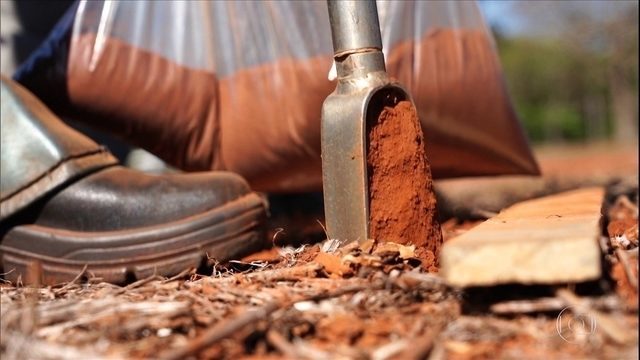RIO DE JANEIRO, BRAZIL – One of the challenges of agriculture is to assess the quality of the soil beyond its physical and chemical features. However, a breakthrough may provide further information to rural producers.
After 30 years of studies, researchers from the Brazilian Agricultural Research Corporation (EMBRAPA) developed a test capable of analyzing further information on the land, to determine its health condition.

The biological analysis of the land, a test that measures the soil’s level of life, is a breakthrough that can offer great advantages to farmers. It works as a “blood test” of the soil. The technology is 100 percent domestic and is affordable.
Soil biology
Brazil is a giant in the production of diverse foods but so much abundance may only be possible if the soil is rich. Understanding life underground is as old a challenge as agriculture.
The reason is that the quality of the land is crucial for any crop, it is the basis of everything. In addition to its richness in nutrients, such as phosphorus or nitrogen, the soil also needs to be healthy, containing fungi, bacteria and other organisms.
“When farmers would send soil samples to the laboratory, there was a significant shortcoming in these tests, namely the absence of biological components,” explains Ieda de Carvalho Mendes, a researcher at EMBRAPA.
The soil’s biological properties point to the richness of the soil’s life. These organisms, imperceptible to the naked eye, help to decompose organic matter, recycle nutrients and retain oxygen for plants. In short, life in the soil improves crop life.
“One gram of soil should contain around one billion cells and bacteria; it’s a parallel universe under our feet,” adds Ieda.
Faced with such significance, EMBRAPA Cerrados has developed an innovative test, called bioanalysis or biological analysis of soil. During the more than 20 years of study, researchers have analyzed over 30 types of substances present in the soil to assess its health.
With this new test, one can determine all that has passed through the soil: fertilizer, agrotoxins, different crops, the types of management, the entire memory that the soil carries.
“We can access this memory and know if this management is favoring the soil’s health or if it is leading to degradation, in the same way as with a blood test,” explains the EMBRAPA researcher.
How does it work?
The test is quick: all it needs is a soil sample and reagents are applied. The results are detected by color analysis. With a table developed by EMBRAPA, the soil’s chemical and biological properties can be measured.
The study also assesses three soil functions:
Ability to provide nutrients;
Ability to store these nutrients; and
Ability to exchange nutrients with the plant.
“Brazilian farmers will be the only ones in the world who can monitor how their soil is performing in terms of nutrient supply. This is unique in the world,” celebrates Ieda de Carvalho Mendes.
Tests are showing good results
Before launching the bioanalysis on the market, the researchers conducted tests on over 100 farms.
One of the partners in the study is farmer and agronomist José Mário Ferreira, who produces on 2,000 hectares in the municipality of Padre Bernardo, in the Midwest state of Goiás. He grows corn, feeds his cattle in the off-season and then plants soybeans.
The first biological analysis of the soil on his farm was conducted last year, and the result showed that the management in the integration between farming and cattle raising was adequate, but there was room for improvement, such as soil coverage for grain farming, for instance.
With the result in hand, José Mário decided to increase the time of grassland, from six months to one and a half years. “When we planted the soy, afterwards, we noticed that the soy’s vigor was better compared to the area that was only six months”, he says.
With the change, the farmer currently produces about 70 bags of soybean per hectare, well above the national average, without the use of fungicides.
Where to do it?
Currently, the bioanalysis is available in nine laboratories authorized by EMBRAPA. The test costs between R$120 and R$150 per sample.
Currently, the soil biological analysis is only conducted in the Cerrado (savannah), in annual crops such as soybeans, corn, cotton and beans. The researchers are working to expand the testing coverage area.
Source: G1

